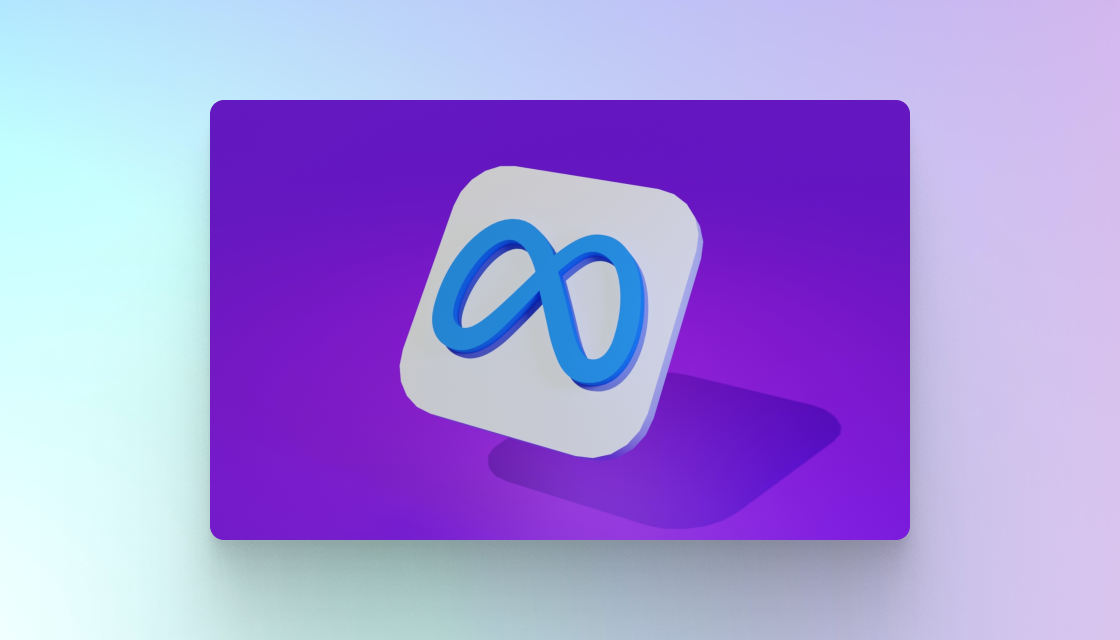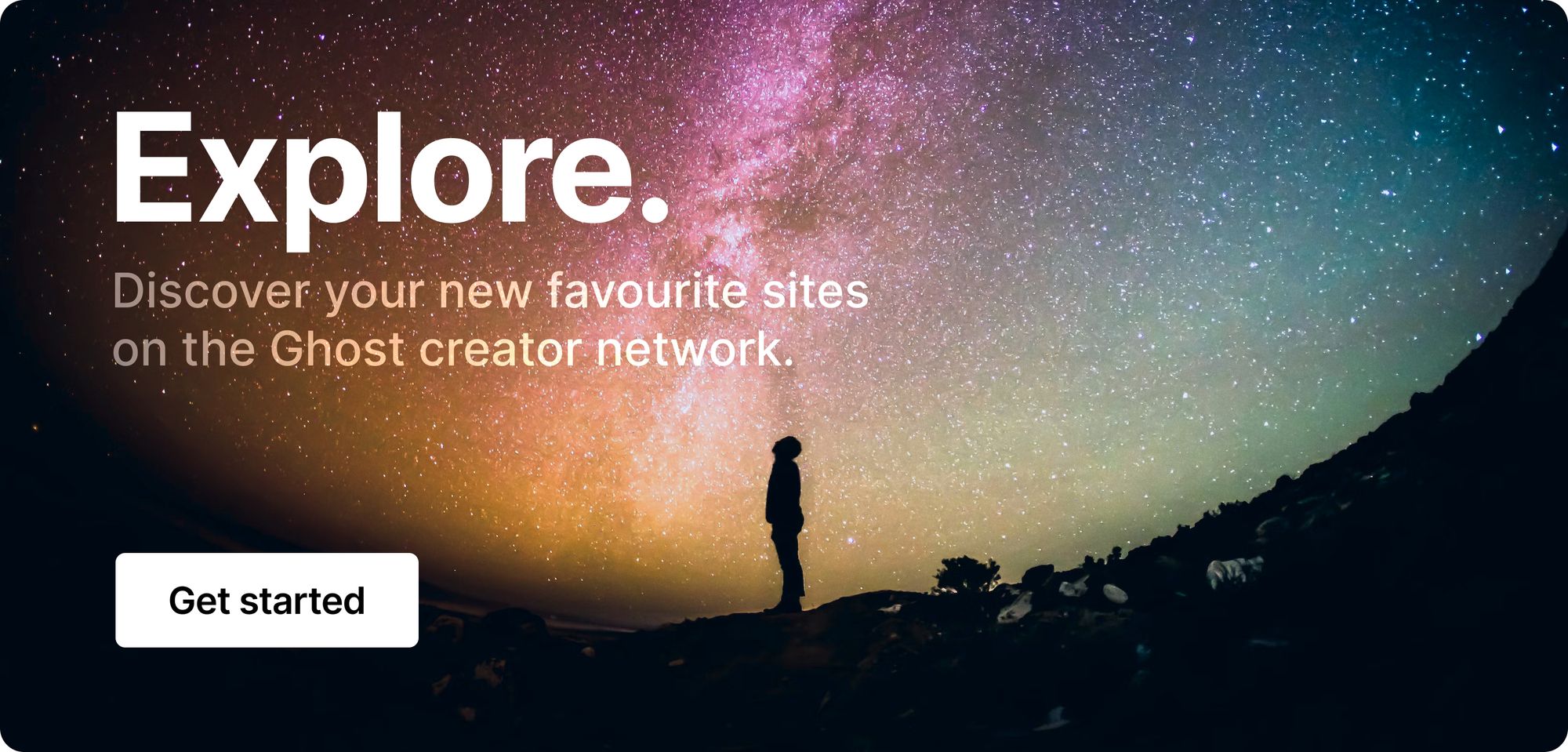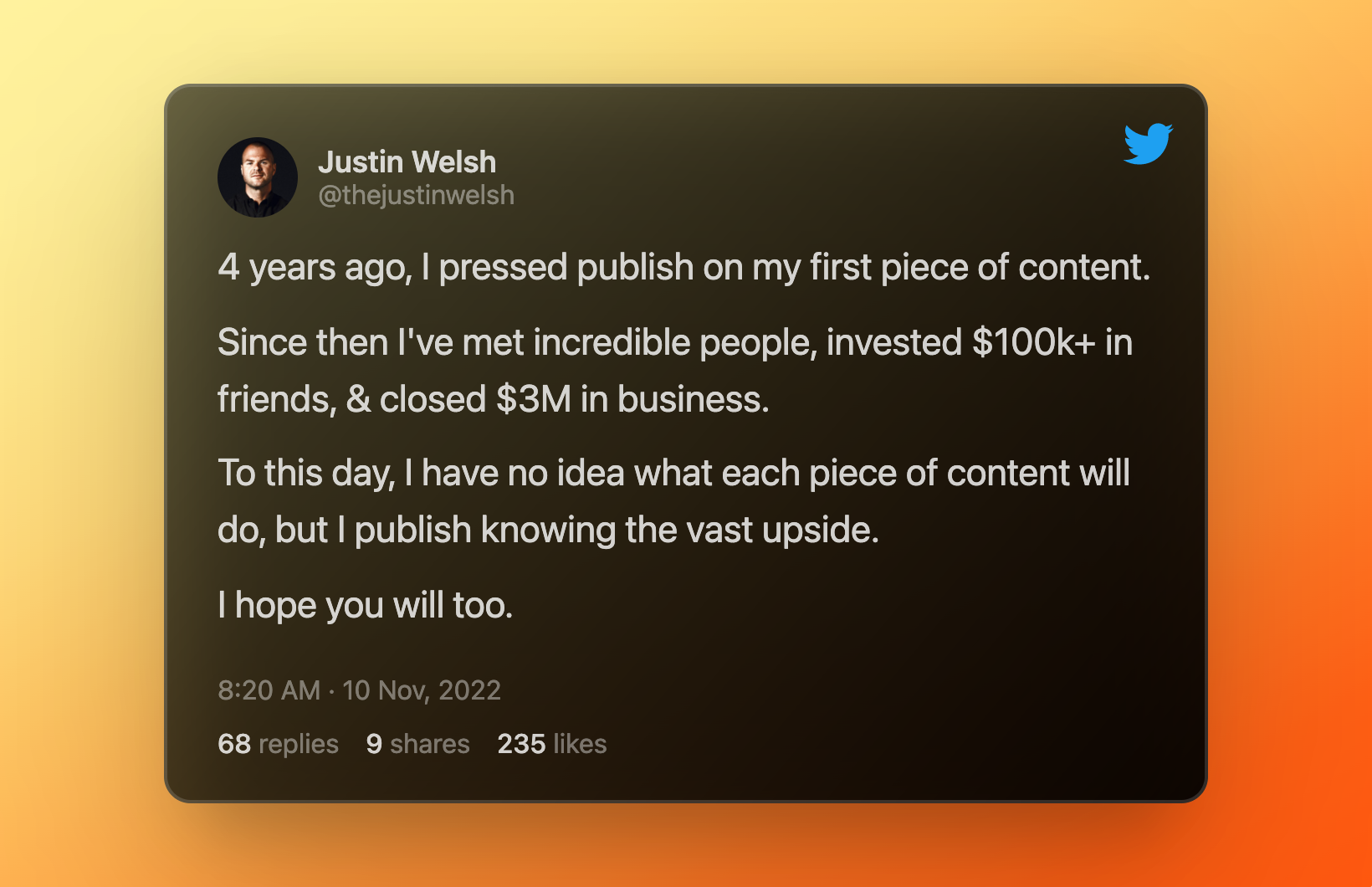🪜 Are you climbing the wrong ladder?
There's a quote by the famous author Stephen Covey that says, "If the ladder is not leaning against the right wall, every step we take just gets us to the wrong place faster."
It's easy to fall so deep into the constant grind of publishing content that we forget to look up and check that our efforts are getting us closer to our real goal.
This week's newsletter is a chance to do just that. Take a breath, look up, and remind yourself why all of this is worth it.
💬 In this issue:
- Turning point. See the strategies used by the fastest-growing newsletters.
- Shuttered. Why tech layoffs should be a wake-up call to every creator.
- Perfection. How to know if you're chasing your dream or someone else's?
🤝 Growth hacking for creators

When most people hear the term growth hacks they often think of wild, unsustainable campaigns that get a flood of attention before dissipating. Simon Owens means something a little different.
Most success is attributed to a steady grind that generates slow, linear growth. In my podcast interviews with hundreds of media operators, they often described key turning points that propelled them to the next level. For lack of a better term, we can refer to these strategic decisions as “growth hacks.” — Simon Owens
You can read the 12+ examples Owens provides in their two-part series (Part 1 & Part 2). For now, here are the high points you can use to strategically grow your project.
- Hire help. This was, by far, the most cited turning point for solo creators. As soon as they were able to get another set of hands or eyes on their project, growth was quick to follow.
- Ask for what you want. If you want people to subscribe to your newsletter, click a link, or upgrade to a paid plan — be direct and ask them. Oftentimes, we use cleverness as a way of avoiding difficult conversations. But if you want your business to thrive, you need to be crystal clear with your customers.
- Find your cadence. Daily, weekly, bi-weekly, monthly — any rhythm you want can work for your publishing schedule, but those who publish more often tend to see the highest returns (this is why building systems and hiring help is crucial).
- Leave open loops. Regardless of your niche, your ability to tell a good story and to create the desire in your readers to come back to see what happens next is vital. Every newsletter or article you write should make readers excited for the next one.
🗞 Latest tips & stories
- How to add your Ghost site to Google News
- Career advice to build creative momentum
- Why do people like online communities?
- 4 easy ways to improve your writing skills
- Sustainable ways to promote your new blog
👩💻 Meta's reminder to every journalist

The news of layoffs across the tech industry (approx. 120,000) has hit journalists in the field particularly hard. The programs and tools they were promised seem to be disappearing around them, particularly those supported by Meta:
If you've read this newsletter for any length of time, you've heard us promote the importance of owning your audience. And as the economy reshuffles itself, this advice stands more true than ever.
Your two greatest assets as a creator are (1) the audience you accrue and (2) how you access them.
How many people know, like, and trust your content? How reliably can you reach them? Everything comes down to these two questions.
As we near the end of 2022, are you happy with your answer to the above questions? If not, what will you do to fix that?

🏖️ What are you building towards?

It's easy to get caught up in chasing milestones (10,000 subscribers, 1 million pageviews, etc.). But are those goals actually tied to the life you want to live?
When Matt Koval was the official Creator Liason for YouTube, they kept running into a weird issue: massively successful creators would quit, seemingly out of the blue.
It turns out the problem was with how they built their success. Many of them were told to build the biggest channels possible. So, they did. They hired staff, signed huge contracts, and spun up multiple channels to publish a torrent of content. But with every decision, they found themselves further and further away from the activities that truly made them happy: being creative, interacting with subscribers, and working with friends.
It was at this point Koval started walking creators through the following exercise: plan out your perfect day.
The process is simple. Create an ideal schedule for yourself, from the moment you wake up to the exact time you go to bed. Include every detail you can — your responsibilities, workload, habits, location, etc. Paint the perfect picture of your creator workday.
What most people find is that they don't actually want or need a gigantic team or a dozen concurrent projects. What they really wanted could usually be accomplished with a few software tools and a handful of part-time freelancers.
TLDR: don't just build towards an amorphous more. Get specific about where you want your creator business to end up, then build backward from there. You may be surprised by how close you already are.
👀 Curators pick

❤️ Enjoy this newsletter?
Forward to a friend and let them know where they can subscribe (hint: it's here).
Anything else? Hit reply to send us feedback or say hello.
Join an invite-only community! Connect with like-minded people who create content professionally — apply here.






